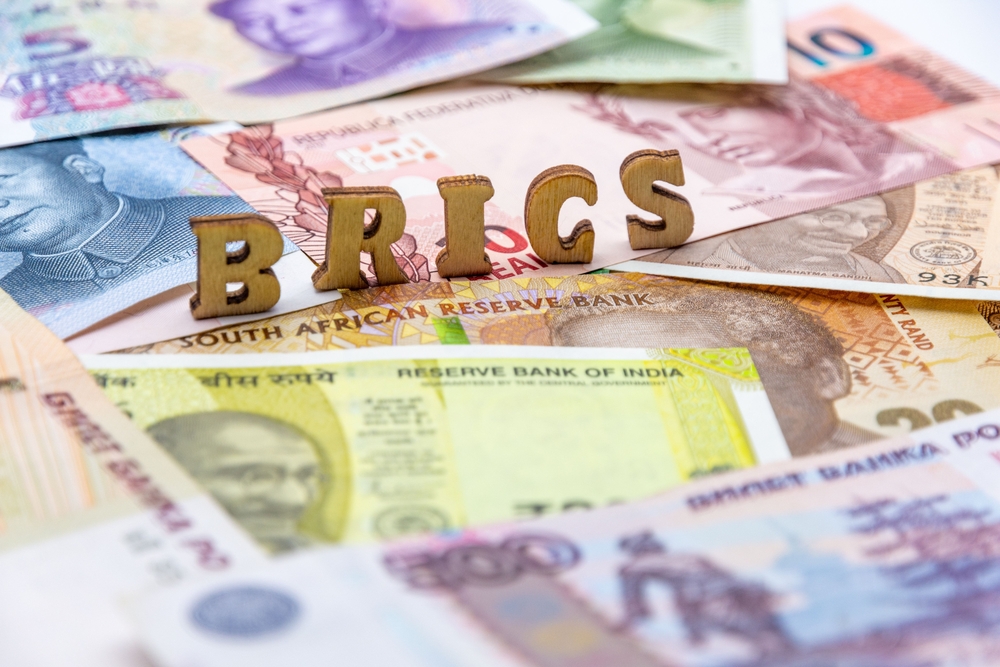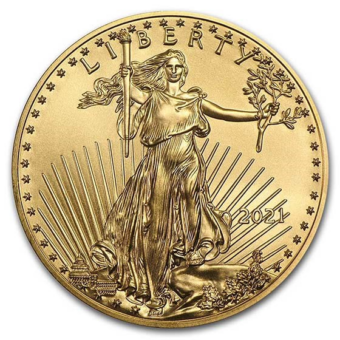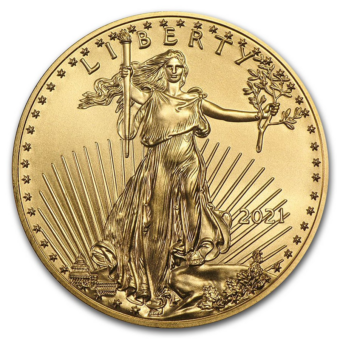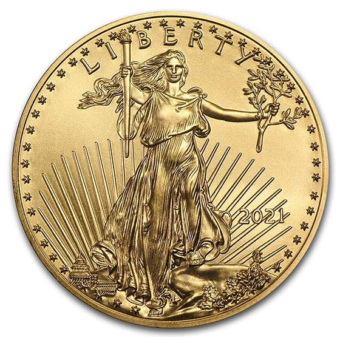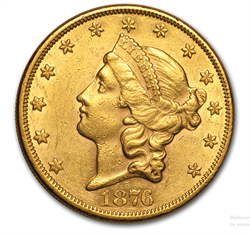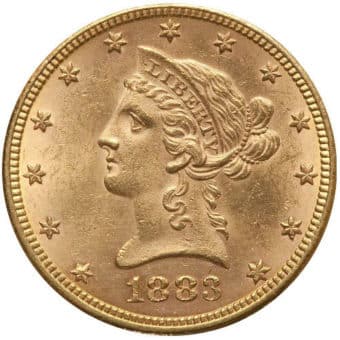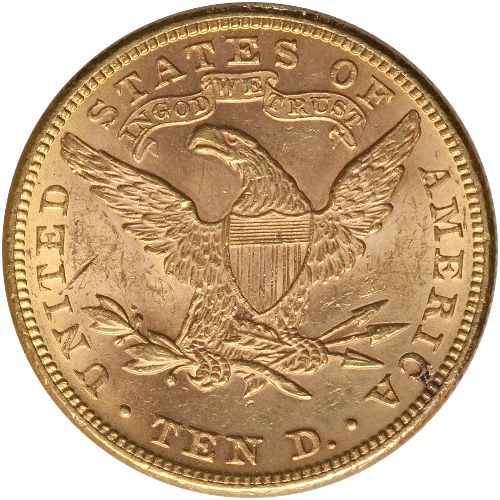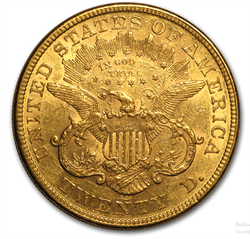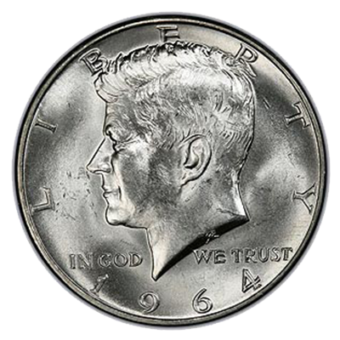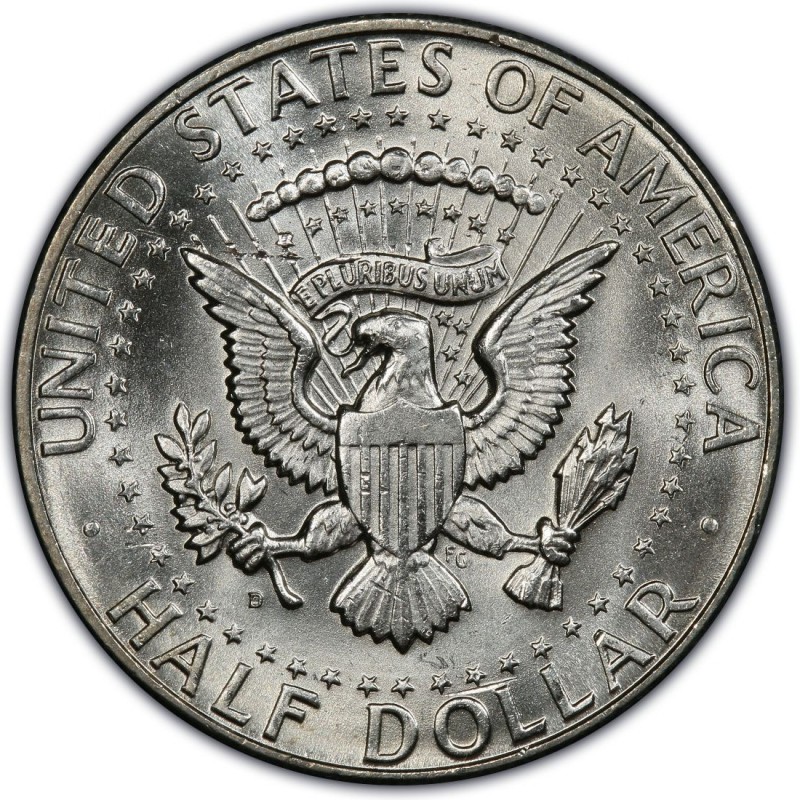A Daily Journey Through the Week's Market
Monday - 3.18.24: Gold prices are marginally up while silver remains stable in early U.S. trading on Monday, as markets await significant central bank activities this week. Asian and European stock markets showed mixed results, with U.S. stock futures indicating a mixed to higher opening. The focus this week is on the Federal Open Market Committee (FOMC) meeting, with expectations set for no policy change. However, any hints from Fed Chairman Jerome Powell's statement and press conference regarding future monetary policy directions will be keenly observed.
Tuesday - 3.19.24: Gold and silver prices have dipped in early U.S. trading on Tuesday, with the market's attention focused on the upcoming Federal Open Market Committee (FOMC) meeting. No changes in policy are expected from this meeting, but insights into future monetary directions will be closely watched. The U.S. dollar is up, while crude oil prices and the 10-year U.S. Treasury note yield have seen minor adjustments. Economic reports on retail sales and new residential construction are also anticipated.
Wednesday - 3.20.24: Gold and silver prices surge in U.S. trading following a Federal Reserve statement perceived as favorable by precious metals bulls, keeping April gold up $13.30 at $2,173.10 and May silver up $0.29 at $25.425. The FOMC meeting maintained an unchanged monetary policy, striking a neutral tone on policy, with no immediate rate cuts expected despite acknowledging elevated inflation.
Thursday - 3.21.24: Gold prices edged higher in U.S. trading, briefly hitting a record before retreating, while silver prices slightly fell after achieving a 3.5-month high. The market reacts to the Federal Reserve's latest meeting, where it maintained its policy but hinted at dovish tendencies. The Fed acknowledged economic growth and a reduction in inflation, with no immediate rate cuts but openness to three cuts within the year. This stance indicates a willingness to accept higher inflation temporarily, stirring interest in the financial markets.
Friday- 3.22.24: Gold and silver prices dropped in early U.S. trading on Friday, with profit-taking after recent gains, alongside a strong U.S. dollar rally that pressured the metals. Gold slid to $2,167.30, while silver increased to $24.725. Mixed global stock indexes and U.S. stocks heading for a strong opening after a record week also dampened demand for safe-haven metals. Meanwhile, the U.S. dollar index rose, buoyed by post-FOMC meeting gains and positive U.S. economic data, with crude oil prices slightly up and the 10-year Treasury yield at 4.24%. Congressional efforts to prevent a government shutdown are currently overlooked by the market, with no major U.S. economic reports expected today.
Markets React Favorably to Fed's Rate Cut Signals
In response to the Federal Reserve's announcement signaling a potential three-rate-cut trajectory for the year, gold prices experienced a notable surge, with spot gold reaching $2,1673.60 per ounce, marking a 0.77% increase for the day. The Fed's decision to maintain the Fed Funds rate within the 5.25% to 5.50% range while indicating a willingness to implement future cuts, particularly in June as per market expectations, spurred renewed bullish sentiment among investors. Despite the Fed's optimistic outlook on economic indicators such as robust job gains and solid growth projections, it remains cautious regarding inflation, delaying immediate rate adjustments until it has greater confidence in inflation converging towards the 2% target. Although the Fed's revised projections suggest a potentially shallower easing cycle than initially anticipated, the market remains optimistic, viewing the evolving monetary policy landscape as conducive to further gains in gold prices.
The Looming Crisis: America's Monetary Meltdown and the Vanishing Workforce
America is on the precipice of an economic catastrophe, reminiscent of the darkest days before the Great Depression, as its money supply has contracted for a staggering fifteenth consecutive month. The grim figures from January 2024, showing a year-over-year drop of -6.13% in the money supply, herald an unprecedented financial storm. This severe contraction, the most significant downturn in decades, signals a potential disaster looming over the economy, with the Rothbard-Salerno money supply metric (TMS) painting a foreboding picture of a nation inching closer to an economic abyss, and full-time employment rapidly disappearing, casting a long shadow over American workers' futures.
The relentless surge of consumer price index (CPI) inflation, despite a shrinking money base, coupled with insatiable demands for looser monetary policies, suggests an economy caught in a perilous cycle of stagnation and inflationary pressures. This ominous scenario marks the onset of a potential crisis, with the vanishing workforce serving as a stark indicator of the turmoil ahead. As America teeters on the brink of a monetary meltdown, the specter of an impending economic collapse looms large, threatening to plunge the nation into a period of unparalleled turmoil.
On the Precipice of Collapse: Four Banks on the Brink Amid Real Estate Downturn
As the commercial real estate sector teeters on the edge of instability, a recent analysis by Evercore ISI shines a distressing light on the vulnerabilities within the banking sector. In the wake of New York Community Bancorp's dramatic losses and subsequent share price plummet, Evercore's scrutiny has identified four regional banks — Cullen/Frost Bankers, M&T Bank, Synovus Financial, and Citizens Financial Group — as being at heightened risk should commercial real estate continue its downward trajectory. Despite the absence of loan default levels seen during the financial crisis, these banks' significant exposure to commercial loans has put them in a precarious position, necessitating a bolstering of their cash reserves. Although the situation is described more as an earnings concern rather than one of liquidity or capital, the specter of a banking crisis looms large, reminiscent of the turmoil that erased First Republic Bank among others in 2023. This analysis serves as a critical alert for investors and regulators alike, underpinning the urgent need for vigilance as nearly $1 trillion in commercial loan debt approaches maturity in 2024, potentially precipitating a domino effect of defaults and banking failures within this sector.
Black Market Gold Soars in Turkey as Citizens Seek Economic Refuge
In Turkey, a country grappling with severe economic instability marked by rampant inflation and currency devaluation, a significant rise in gold smuggling highlights the lengths to which citizens are going to preserve their savings. According to Kitco News, authorities have seized an unprecedented 350 kilograms of gold at border crossings early this year, surpassing over 60% of last year's total, as Turks face a gold demand that far exceeds the supply. This spike in smuggling activities is driven by a steep premium on domestic gold prices, now 7% above international rates, a situation exacerbated by the Turkish government's restrictive import policies aimed at reducing the current account deficit but which have instead tightened the noose around the gold supply, pushing citizens towards illicit means to acquire gold.
The government's attempt to curb this surge by ramping up domestic production of gold coins has proved inadequate against the backdrop of a populace scrambling for a financial lifeline. Negative real interest rates, unyielding inflation, and political instability have only fueled the demand for gold, traditionally considered a safe asset in times of economic turmoil. Despite efforts to stabilize the economy through import quotas and monetary policy adjustments, the chasm between local and global gold prices widens, illustrating the challenge of satiating the gold demand without precipitating further economic distress. This scenario not only reflects the dire economic straits Turkey finds itself in but also the desperation of its citizens clinging to gold as a beacon of financial security amidst an uncertain future.
Gold's Glimmers Swiss Franc: A Precursor to the Fed’s Monetary Easing?
As global central banks signal a shift towards more accommodative monetary policies, the Federal Reserve's indications of potential rate cuts amidst persistent inflation above its 2% target have ignited interest in gold, propelling it to record highs. The Swiss National Bank's (SNB) unexpected decision to lower interest rates by 25 basis points to 1.5% marks a significant moment, being the first major central bank to implement a rate cut this year. This move, aimed at combating an inflation rate forecasted to stay below the 2% target, has had a pronounced impact on gold prices, with values soaring against the Swiss franc. The SNB's action not only reflects a proactive stance on maintaining price stability but also sets a precedent for how central banks might navigate the delicate balance between fostering economic growth and controlling inflation.
Analysts suggest that the Swiss rate cut serves as a barometer for gold's potential performance in the face of the Federal Reserve's anticipated easing cycle. Despite the Fed's hesitance, reflected in the gold market's subdued response against the dollar, the metal's price dynamics against the Swiss franc offer insights into future trends. With expectations of further rate reductions by the SNB in response to tepid inflationary pressures, gold is positioned to benefit from a global environment of declining interest rates. This scenario underscores gold's enduring appeal as a safe haven asset, particularly in times of economic uncertainty and shifting monetary policy landscapes. As central banks, including the Fed, pivot towards easing measures, gold stands to gain, reinforcing its status as a strategic hedge against inflation and currency devaluation.
The US Faces a Looming Showdown as 36 Nations Rally to BRICS
In an unmistakable signal of a shifting global economic order, 36 developing economies are lining up at BRICS' door, eager to join forces in a bold move that could dramatically undermine the US's long standing financial dominion. This mass mobilization towards the BRICS alliance, spearheaded by powerhouses like China and Russia, heralds a stark challenge to the supremacy of the US dollar, threatening to unravel the fabric of American economic influence worldwide. As these countries unite in their quest to ditch the dollar in favor of local currencies for cross-border trade, the United States stands outnumbered and vulnerable, facing an economic battleground where its adversaries are rapidly amassing strength. The expansion of BRICS not only symbolizes a growing resistance to US dollar dependency but also marks a critical juncture in the global economic hierarchy, where the balance of power is increasingly contested.
The Federal Reserve's Updated Outlook Amidst Inflation Concerns
Wednesday's Federal Reserve conference, led by Chair Jerome Powell, signaled a mix of optimism and caution that resonated positively with markets, propelling stocks to new highs. Despite moderate concerns over inflation readings from January and February, the Federal Reserve officials maintain projections of three potential interest rate cuts within the year. However, the real shift in the Fed's perspective lies beyond the immediate market focus on rate cuts. A significant update in the Fed's economic outlook for 2024 reveals a move towards greater confidence in sustainable growth, with a notable revision of GDP growth projections from 1.4% to 2.1%. This adjustment suggests a belief in supply-side-driven growth, hinting at an increase in labor supply and productivity that could extend the current favorable economic conditions into the next year. Nonetheless, the Fed's optimistic forecast hinges on forthcoming inflation data aligning with their expectations, a condition that has yet to be met in the early months of the year. This nuanced message from the Federal Reserve underscores a cautious but hopeful outlook on the economy's trajectory, balancing the anticipation of rate cuts with the reality of inflationary pressures.
Next Week’s Key Events
Monday, March 25
-
10:00 am: New Home Sales for February
-
10:30 am: Fed Gov. Lisa Cook speaks
Tuesday, March 26
-
9:00 am: S&P Case-Shiller Home Price Index for January
-
10:00 am: Consumer Confidence for March
Wednesday, March 27
-
6:00 pm: Fed Gov. Christopher Waller speaks
Thursday, March 28
-
8:30 am: Initial Jobless Claims for the week ending March 23
-
8:30 am: GDP (2nd revision) for Q1
-
10:00 am: Pending Home Sales for February
-
10:00 am: Consumer Sentiment (final) for March
Friday, March 29
-
8:30 am: Personal Consumption Expenditures (PCE) Index for February
-
11:30 am: Fed Chair Jerome Powell speaks
IMPACT ON PRECIOUS METALS MARKETS
New Home Sales & Pending Home Sales: These reports can impact the gold and silver market as they are indicators of economic health. Strong home sales suggest a robust economy, which might lead to higher interest rates, decreasing the attractiveness of non-yielding assets like gold and silver.
Fed Governor Speeches & Fed Chair Jerome Powell Speaks: Speeches from Federal Reserve officials, including the Chair, can significantly influence gold and silver prices. These speeches often contain hints about future monetary policy, including interest rates and quantitative easing measures. Hawkish tones (favoring higher interest rates) can strengthen the dollar, putting downward pressure on gold and silver prices. Conversely, dovish tones (favoring lower interest rates) can weaken the dollar, boosting gold and silver prices.
S&P Case-Shiller Home Price Index & Consumer Sentiment/Confidence: These indicators provide insights into consumer behavior and economic trends. Rising home prices and high consumer confidence can signal economic strength, potentially leading to higher interest rates and a stronger dollar, which would negatively affect gold and silver prices. On the other hand, declining confidence or stagnating home prices might indicate economic concerns, supporting gold and silver as safe havens.
Initial Jobless Claims: Weekly jobless claims data can influence market perceptions of the labor market's health. Rising claims suggest weakening employment conditions, potentially leading to safe-haven buying in gold and silver. Lower claims indicate a strong labor market, which could strengthen the dollar and pressure gold and silver prices.
GDP (2nd revision): GDP revisions can affect gold and silver markets by altering perceptions of economic strength. An upward revision might lead to higher interest rates and a stronger dollar, pressuring precious metals. A downward revision could signal economic concerns, boosting safe-haven demand for gold and silver.
Personal Consumption Expenditures (PCE) Index: The PCE index is a key inflation indicator watched by the Federal Reserve. Rising inflation could lead to expectations of monetary policy tightening, potentially strengthening the dollar and negatively impacting gold and silver. However, if the market perceives that the Fed will allow inflation to run higher without raising interest rates, gold and silver could benefit as inflation hedges.


